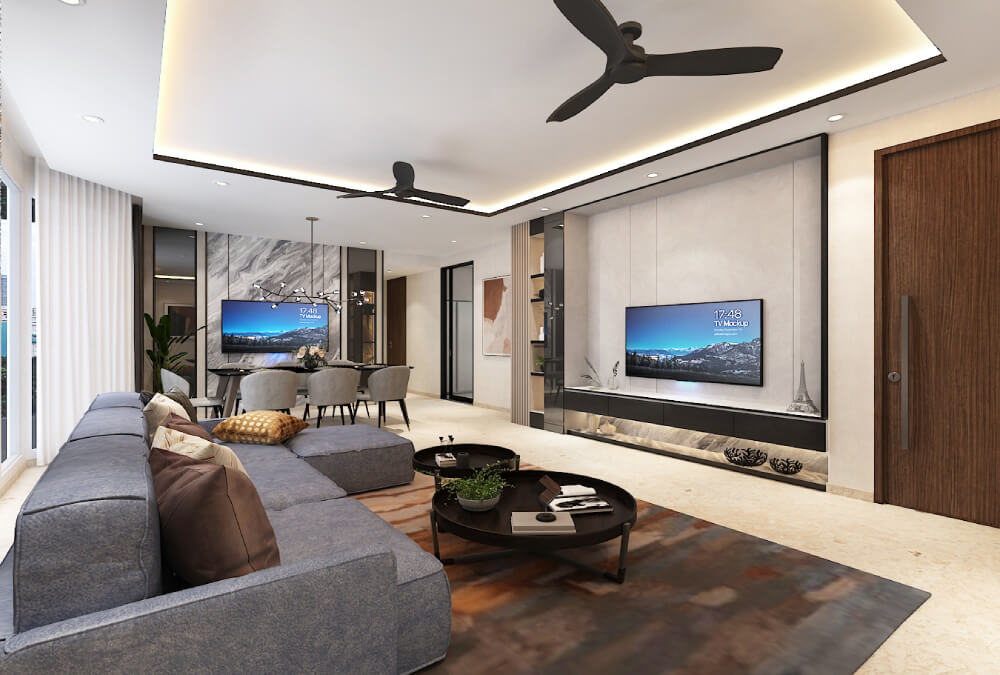Singapore, renowned for its blend of tradition and modernity, boasts a thriving interior design industry. This vibrant city-state is home to some of the most innovative and talented interior designers in the world. These professionals have mastered the art of transforming ordinary spaces into extraordinary living environments. Let’s delve into the world of Singapore’s home interior design geniuses and explore what sets them apart.
The Rise of Interior Design in Singapore
Singapore’s unique cultural tapestry plays a significant role in its interior design scene. The fusion of Malay, Chinese, Indian, and Western influences creates a rich backdrop for designers to draw inspiration from. This multicultural environment encourages a diverse range of styles, from traditional Peranakan motifs to sleek, contemporary aesthetics.
Economic Prosperity and Urbanization
The rapid economic growth and urbanization in Singapore have fueled the demand for sophisticated and functional living spaces. With a burgeoning middle class and an increasing number of high-net-worth individuals, there is a growing appetite for personalized and luxurious interiors. This economic boom has provided a fertile ground for interior designers to flourish and showcase their creativity.
Key Elements of Singaporean Interior Design
Harmonizing Functionality and Aesthetics
Singaporean interior designers are adept at balancing functionality with aesthetics. Given the city’s limited space, especially in high-rise apartments, designers focus on creating efficient layouts without compromising on style. Multifunctional furniture, clever storage solutions, and space-saving designs are hallmarks of their work.
Embracing Minimalism
Minimalism is a prevalent theme in Singaporean interior design. Influenced by Japanese Zen principles and Scandinavian simplicity, this approach emphasizes clean lines, neutral color palettes, and clutter-free spaces. The minimalist aesthetic not only maximizes space but also promotes a sense of tranquility and order.
Incorporating Nature
Despite its urban landscape, Singapore is known as the “Garden City,” and this connection to nature is often reflected in interior design. Designers incorporate natural elements such as wood, stone, and greenery to create a sense of harmony with the outdoors. Biophilic design, which integrates natural materials and plant life, is increasingly popular, fostering well-being and relaxation.
Trends Shaping Singapore’s Interior Design Landscape
Sustainable Design
Sustainability is a growing concern in Singapore, and interior designers are increasingly incorporating eco-friendly practices. This includes using sustainable materials, energy-efficient lighting, and designing spaces that promote natural ventilation and daylight. The push towards green design is not only environmentally responsible but also appeals to the eco-conscious consumer.
Smart Homes
The integration of smart technology is revolutionizing home design in Singapore. From automated lighting and climate control to advanced security systems, smart homes offer unparalleled convenience and efficiency. Interior designers are adept at incorporating these technologies seamlessly into their designs, enhancing both functionality and aesthetics.
Customization and Personalization
Today’s homeowners in Singapore are seeking spaces that reflect their tastes and lifestyles. As a result, bespoke design solutions are in high demand. Interior designers are creating highly customized interiors, from tailor-made furniture to unique art installations, ensuring that each home is a true reflection of its owner.
Challenges in the Industry
Space Constraints
One of the biggest challenges for interior designers in Singapore is the limited space. With the majority of the population living in high-rise apartments, maximizing small spaces is a constant challenge. Designers must be creative and innovative in their approach to ensure that every square foot is utilized effectively.
Balancing Tradition and Modernity
Singapore’s rich cultural heritage presents both opportunities and challenges. Designers must strike a delicate balance between preserving traditional elements and embracing modernity. This requires a deep understanding of cultural nuances and an ability to blend different styles harmoniously.
The Future of Interior Design in Singapore
Embracing Technology
The future of interior design in Singapore is poised to be shaped by advancements in technology. Virtual reality (VR) and augmented reality (AR) are becoming valuable tools for designers, allowing clients to visualize their spaces before any physical changes are made. This technology enhances the design process and improves client satisfaction.
Focus on Well-being
As the pace of life in Singapore continues to accelerate, there is a growing emphasis on creating spaces that promote well-being and relaxation. Designers are increasingly focusing on elements such as natural light, ventilation, and ergonomic furniture to enhance the quality of life for residents. Wellness-centric design is expected to become a defining trend in the coming years.
Global Influence
While rooted in local culture, Singaporean interior design is also influenced by global trends. As international travel and communication become more accessible, designers are exposed to a broader range of styles and ideas. This cross-cultural exchange is likely to result in even more diverse and dynamic interior design solutions.
Conclusion
The interior design scene in Singapore is a testament to the city’s creativity, innovation, and cultural richness. From luxurious penthouses to cozy HDB flats, Singaporean interior designers are transforming living spaces with their unique blend of functionality, aesthetics, and cultural sensitivity. As the industry continues to evolve, these design geniuses will undoubtedly keep pushing the boundaries, creating homes that are not only beautiful but also deeply reflective of the diverse and vibrant spirit of Singapore.

